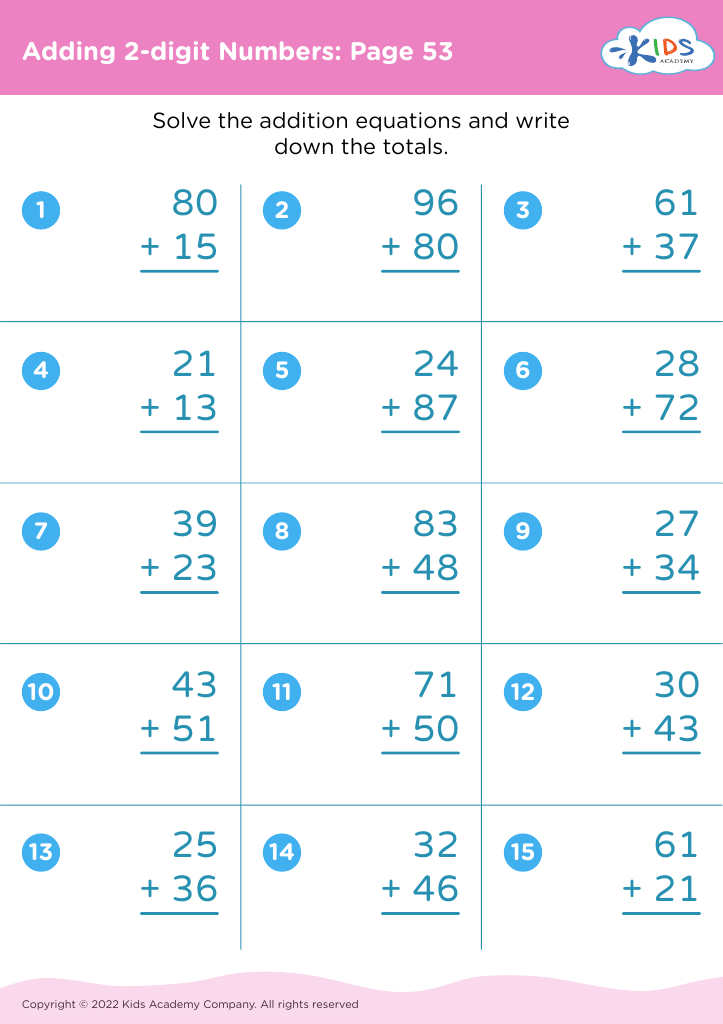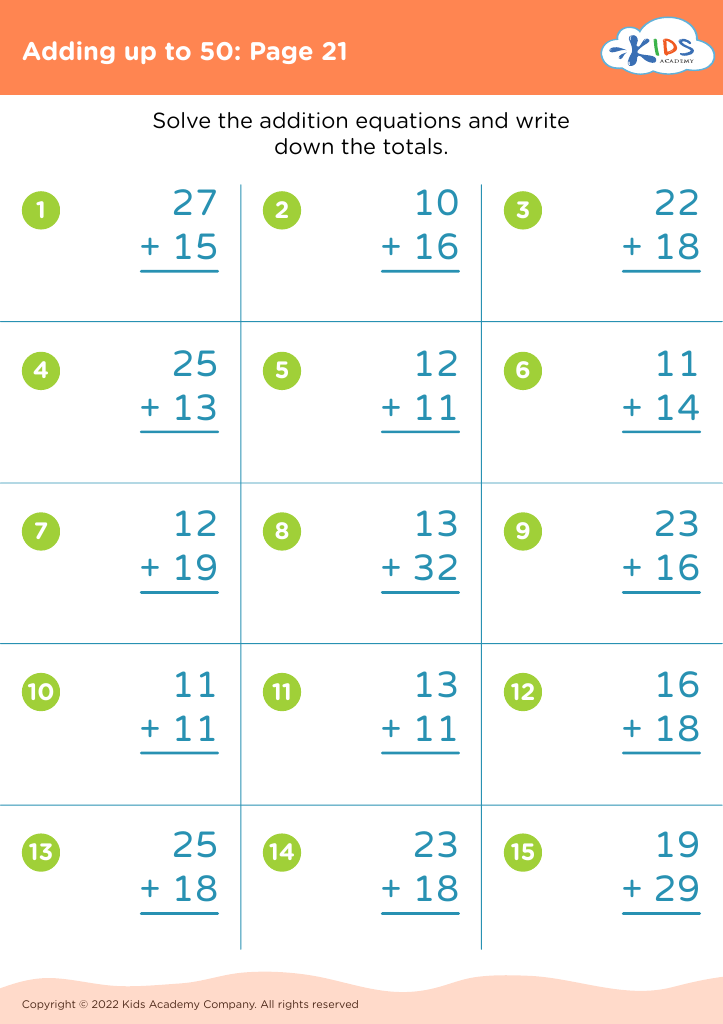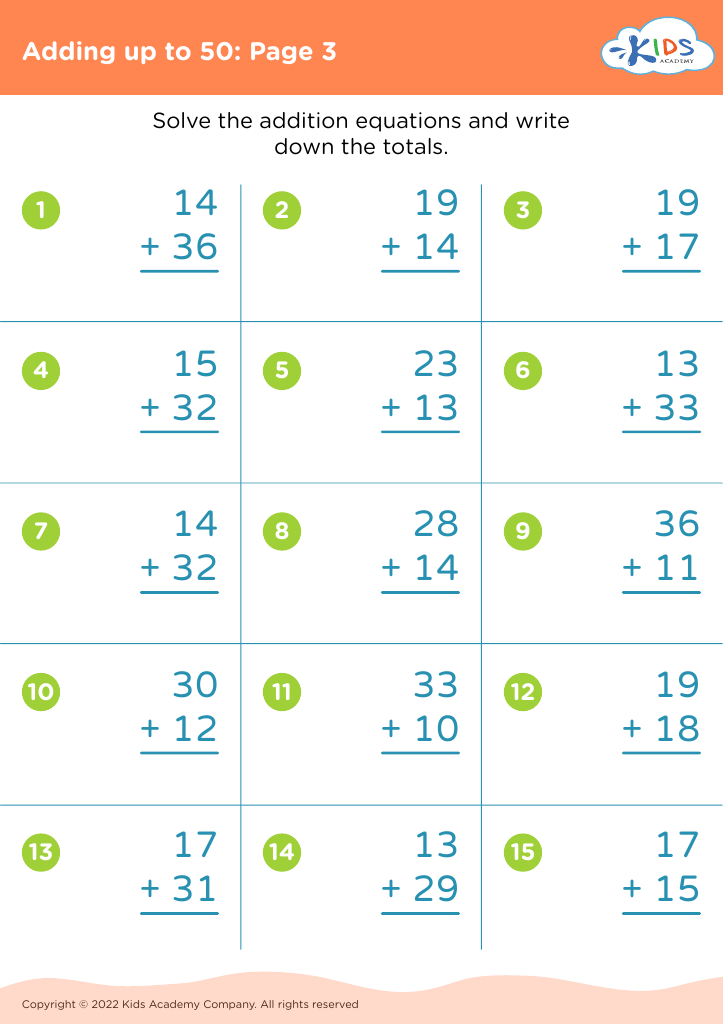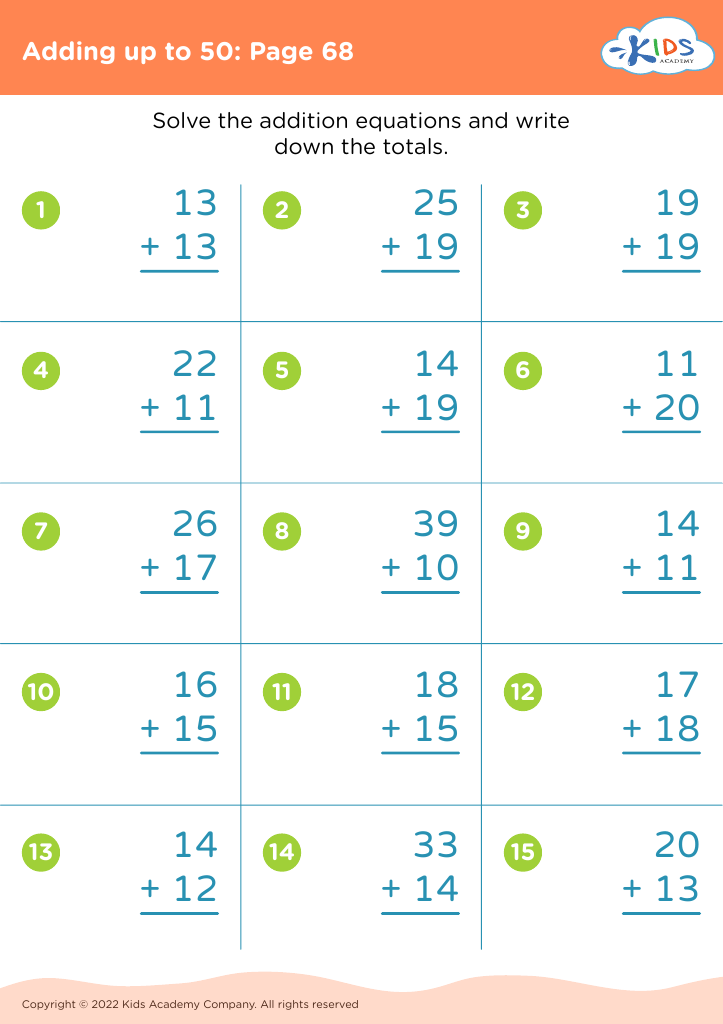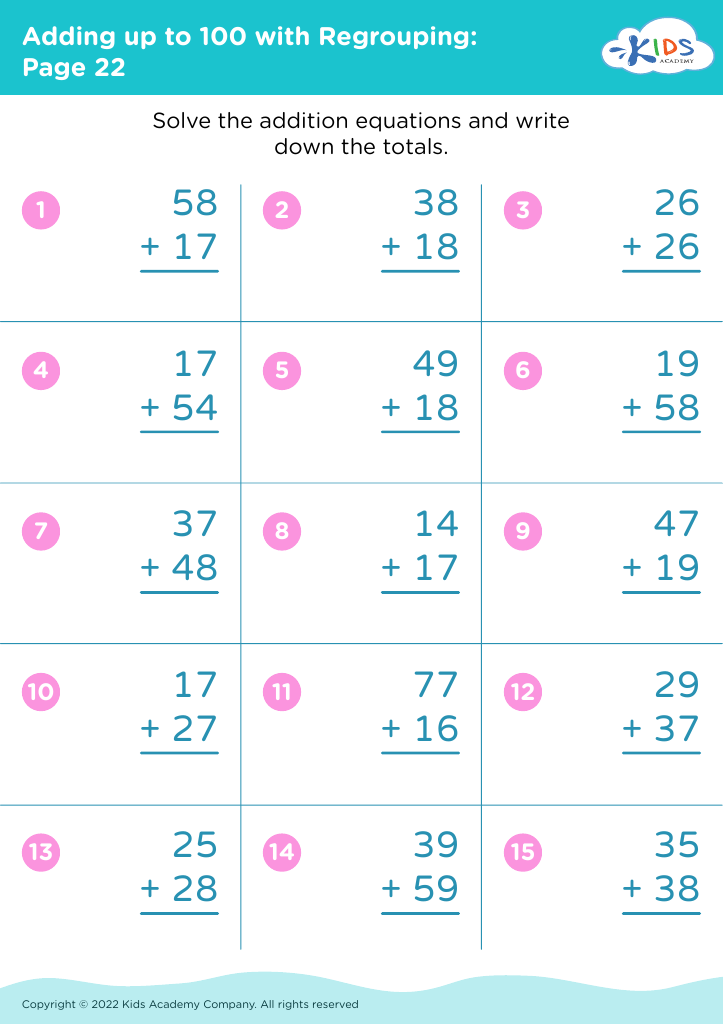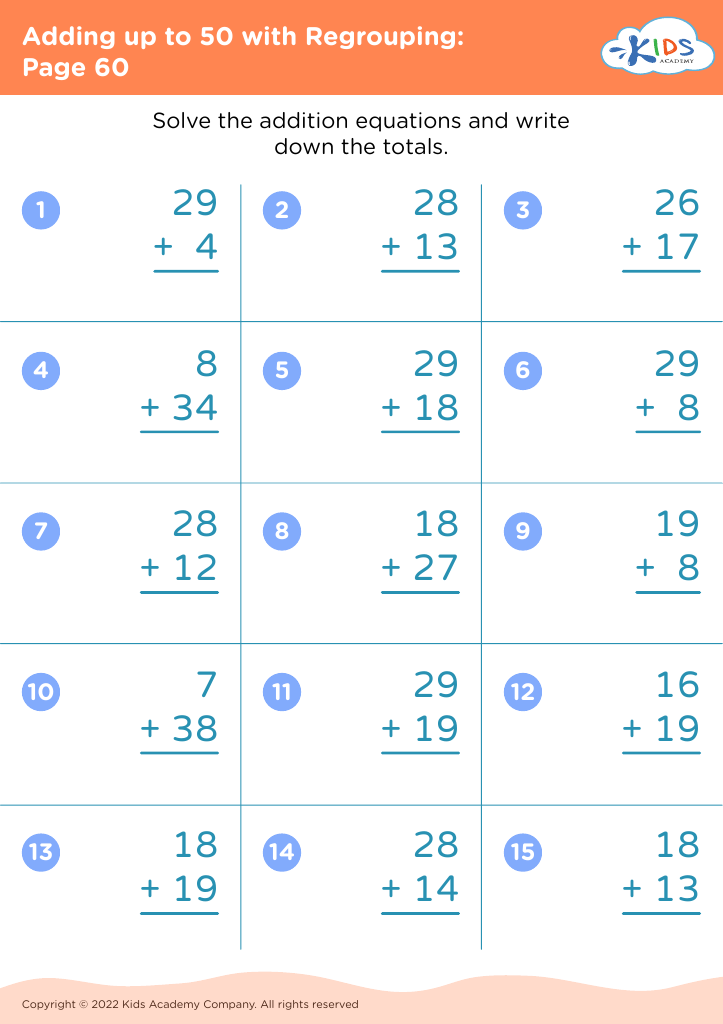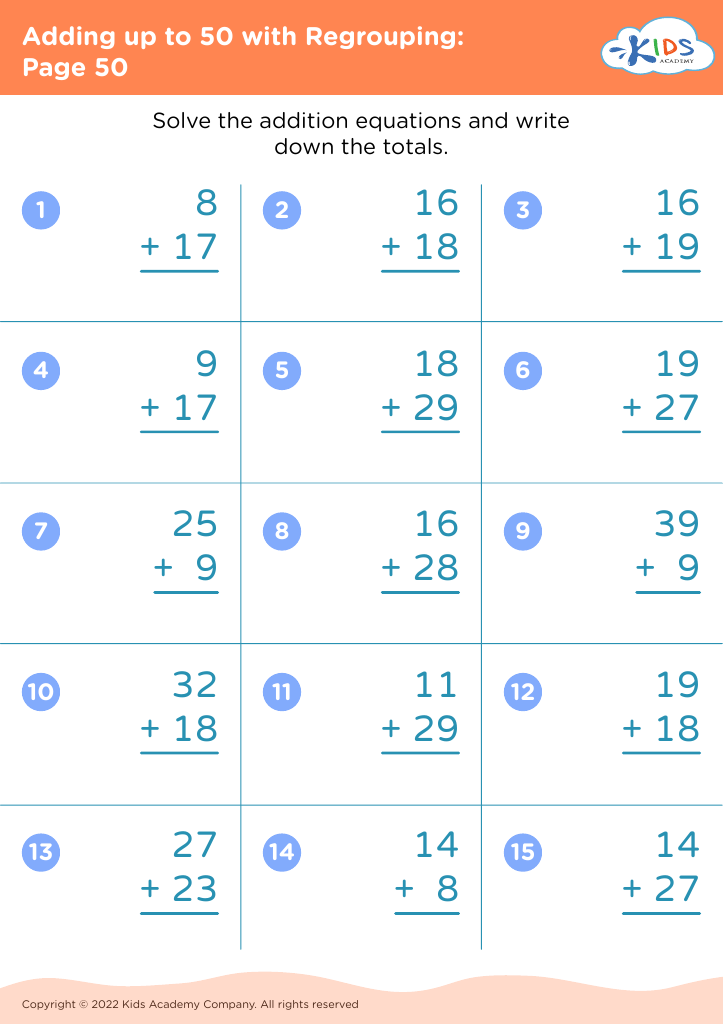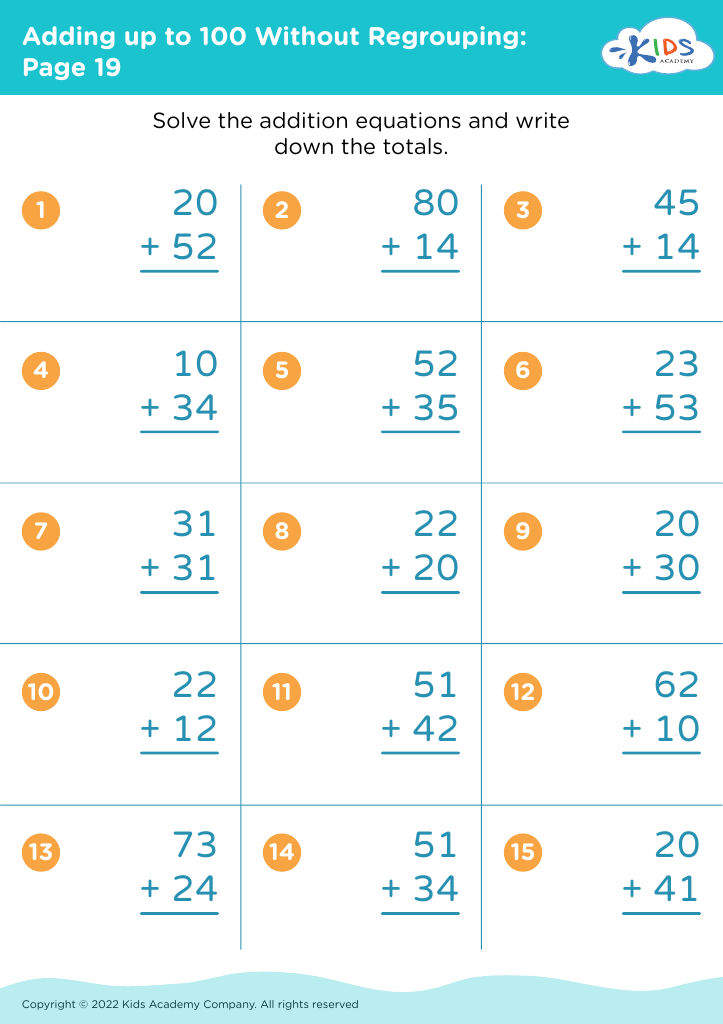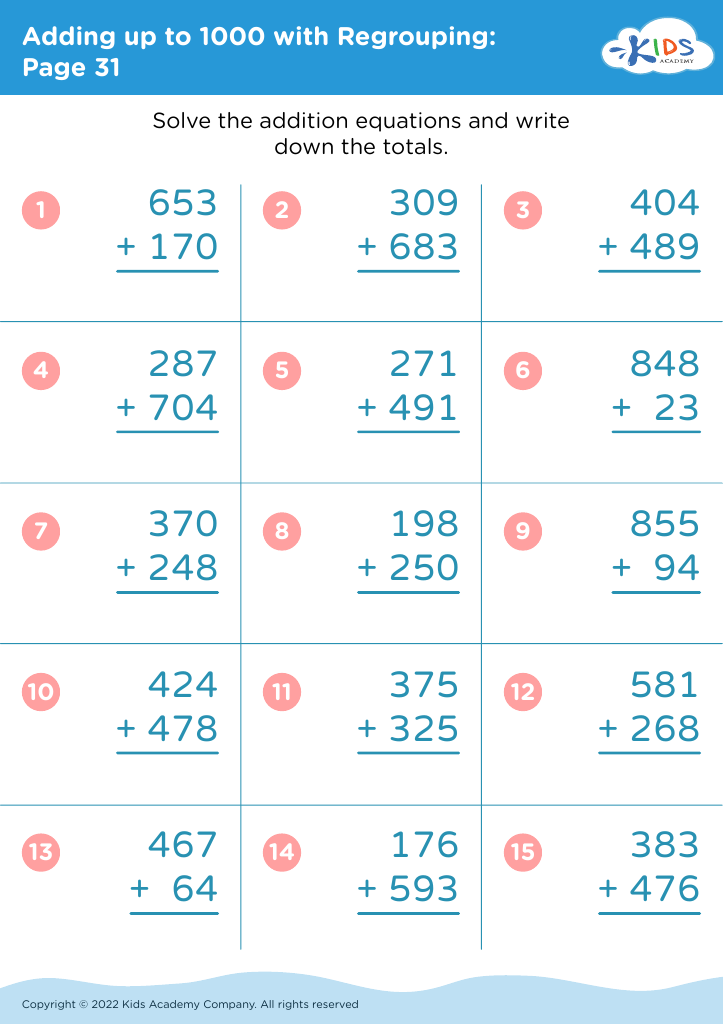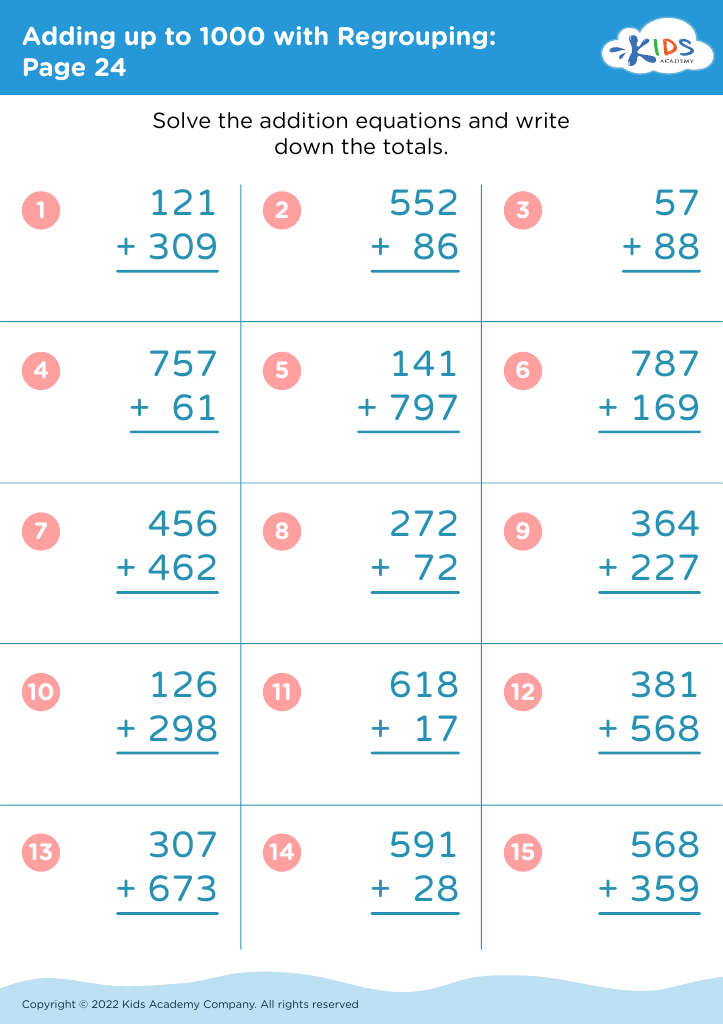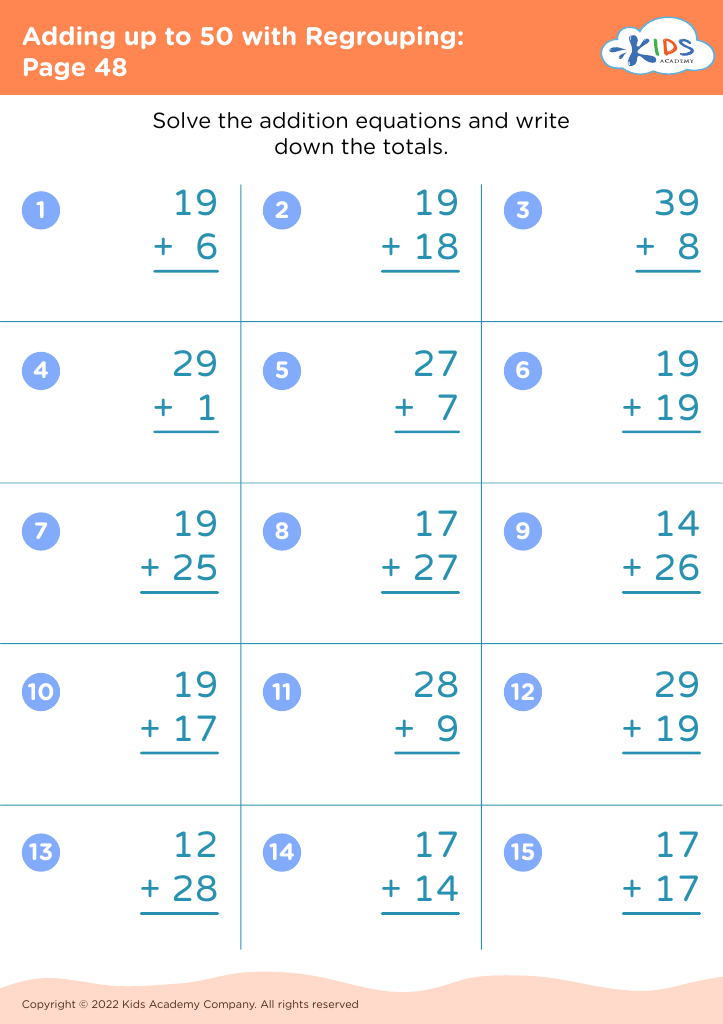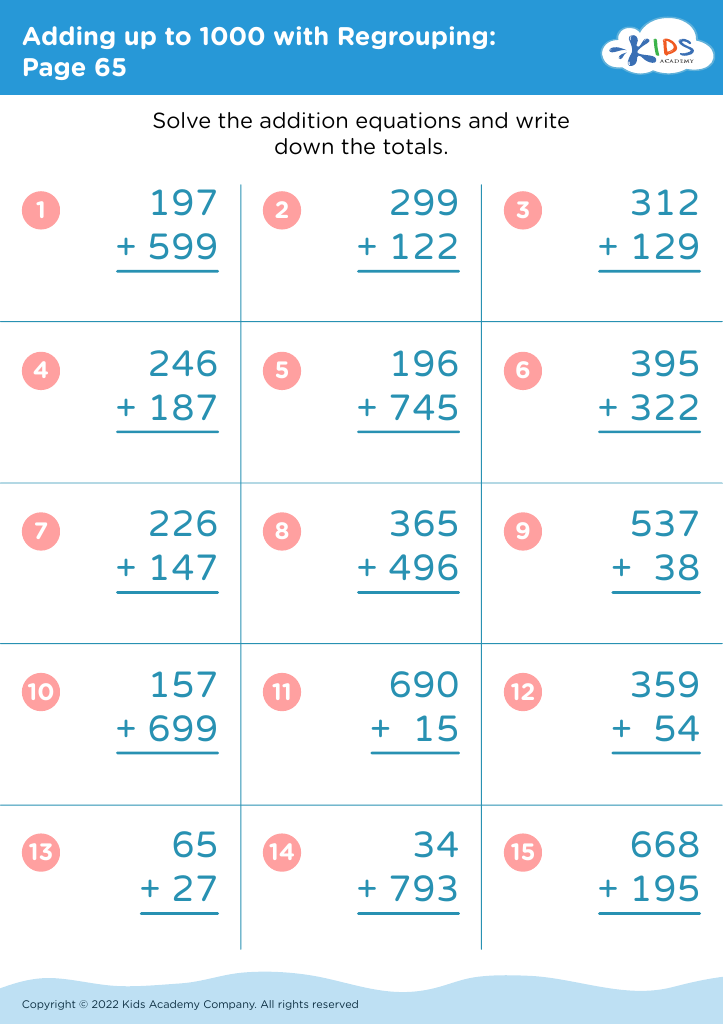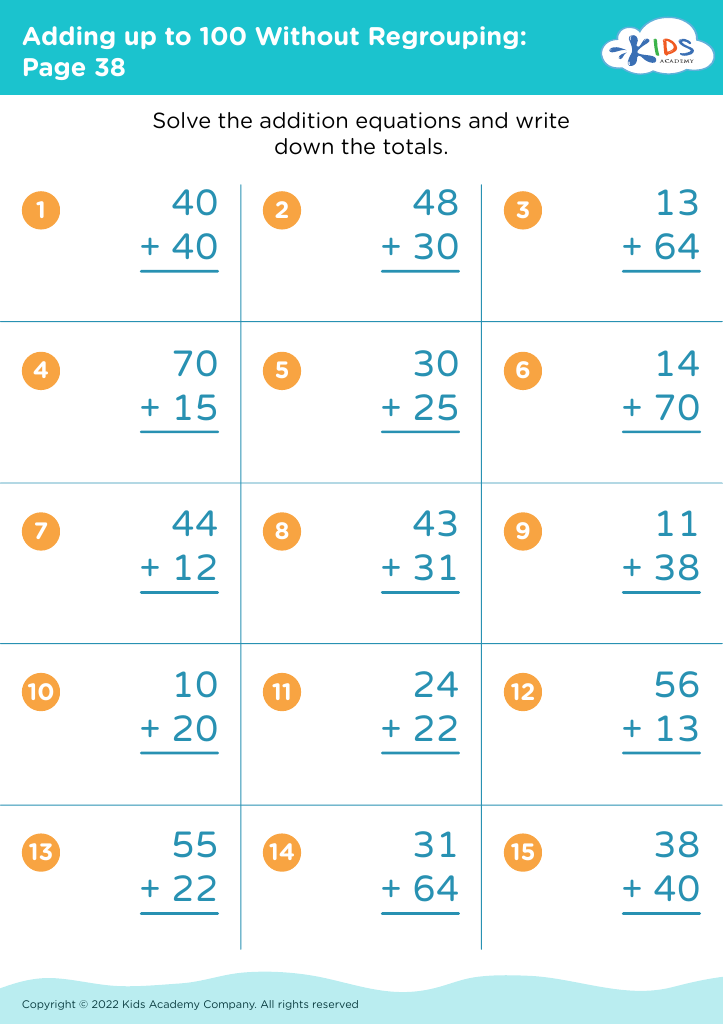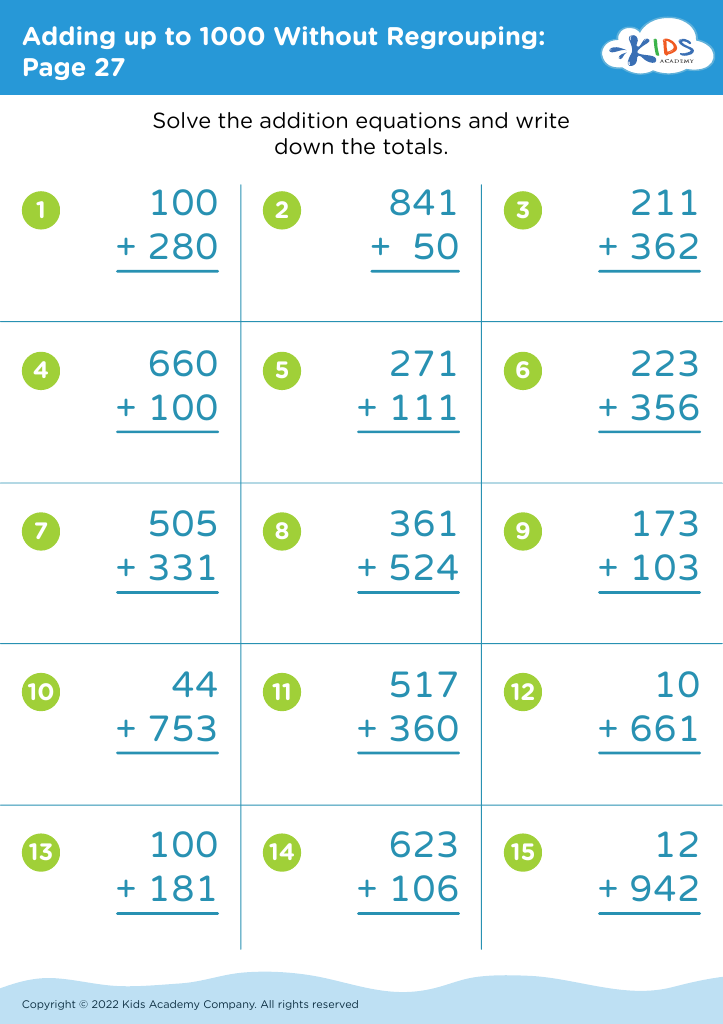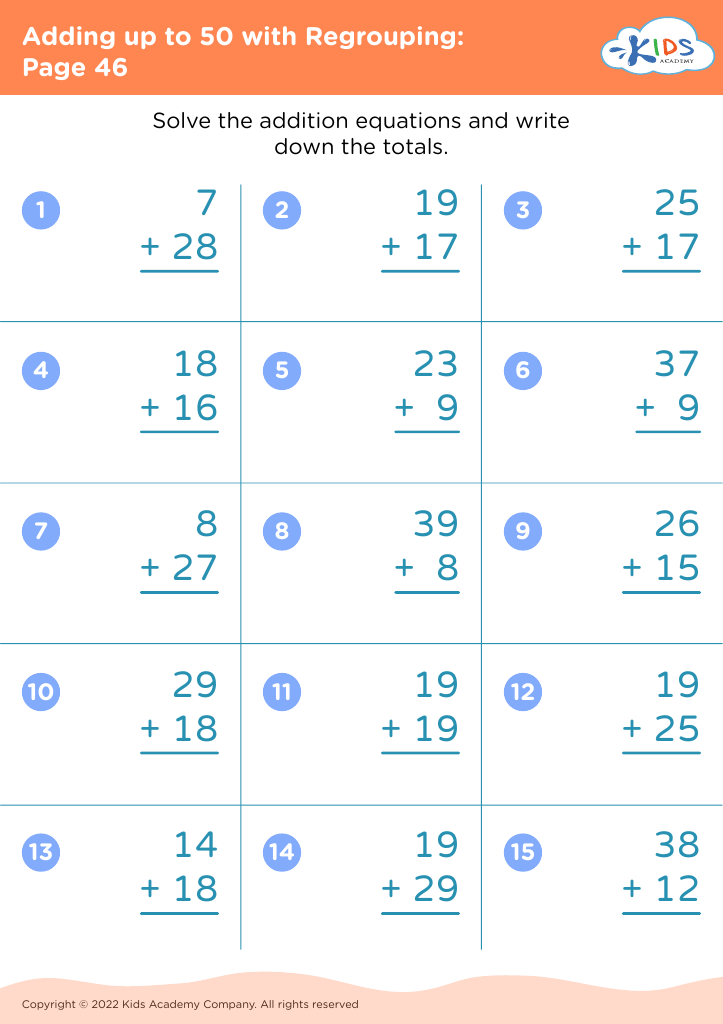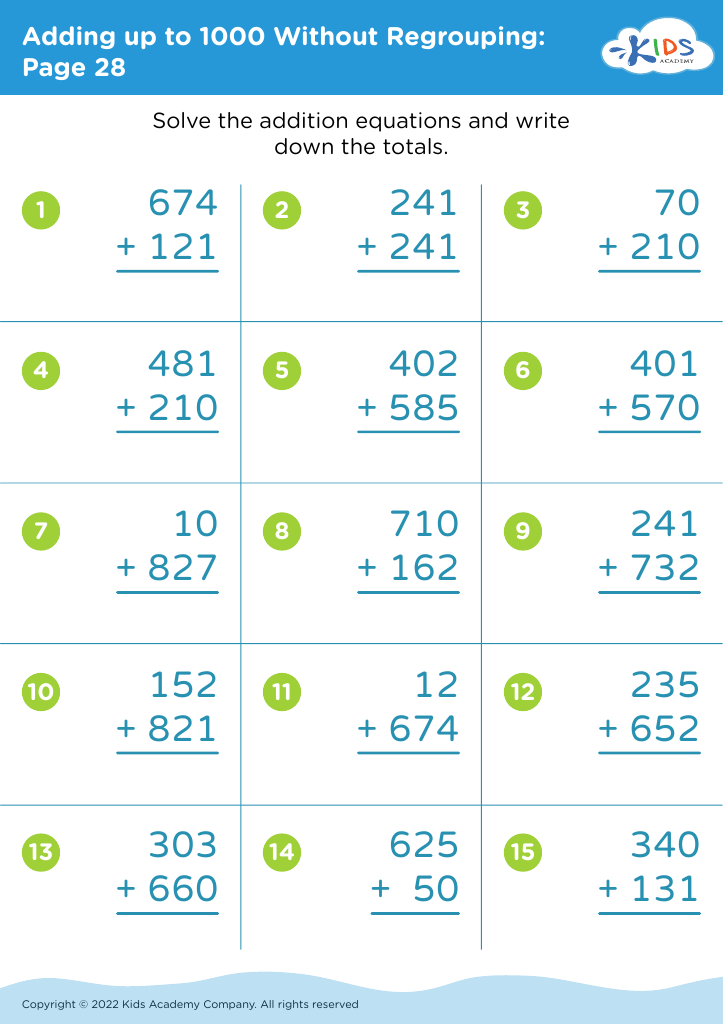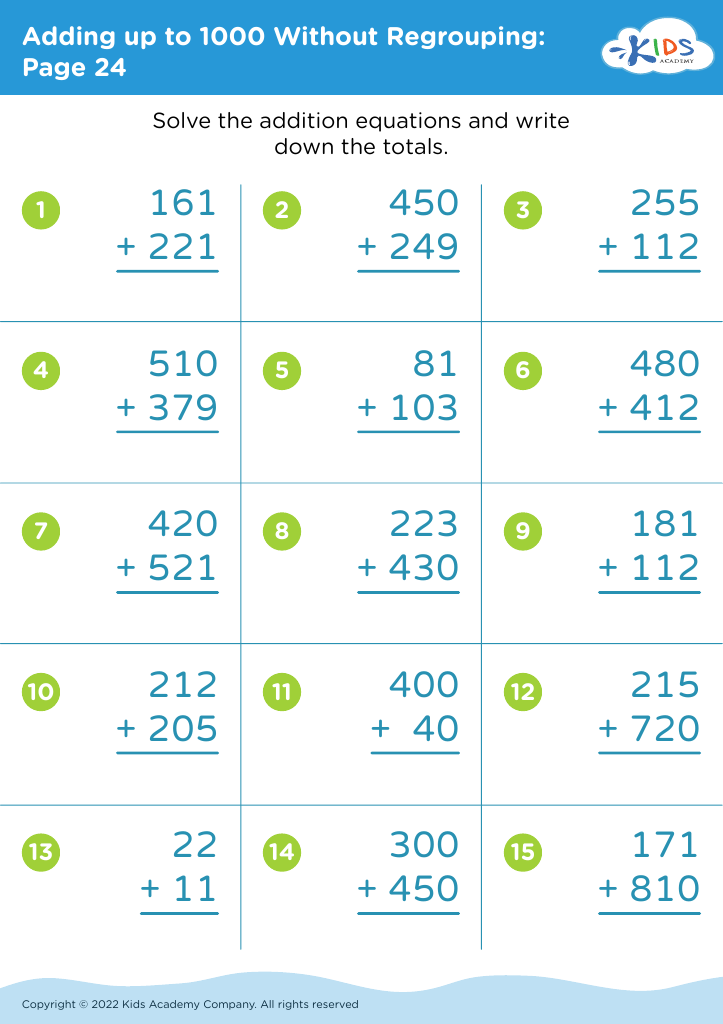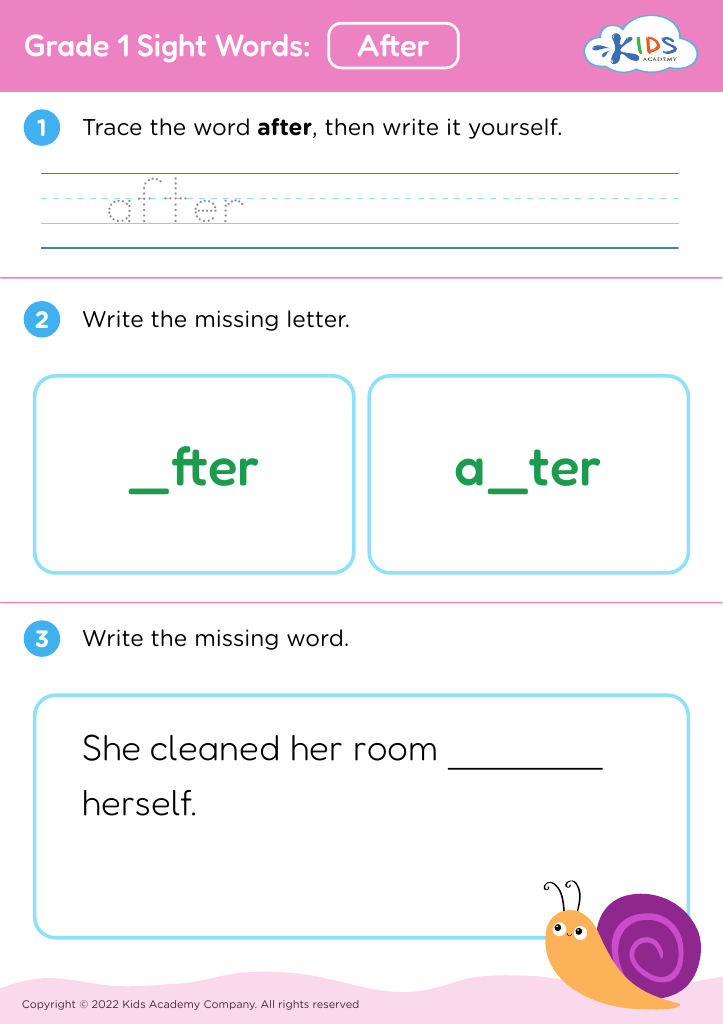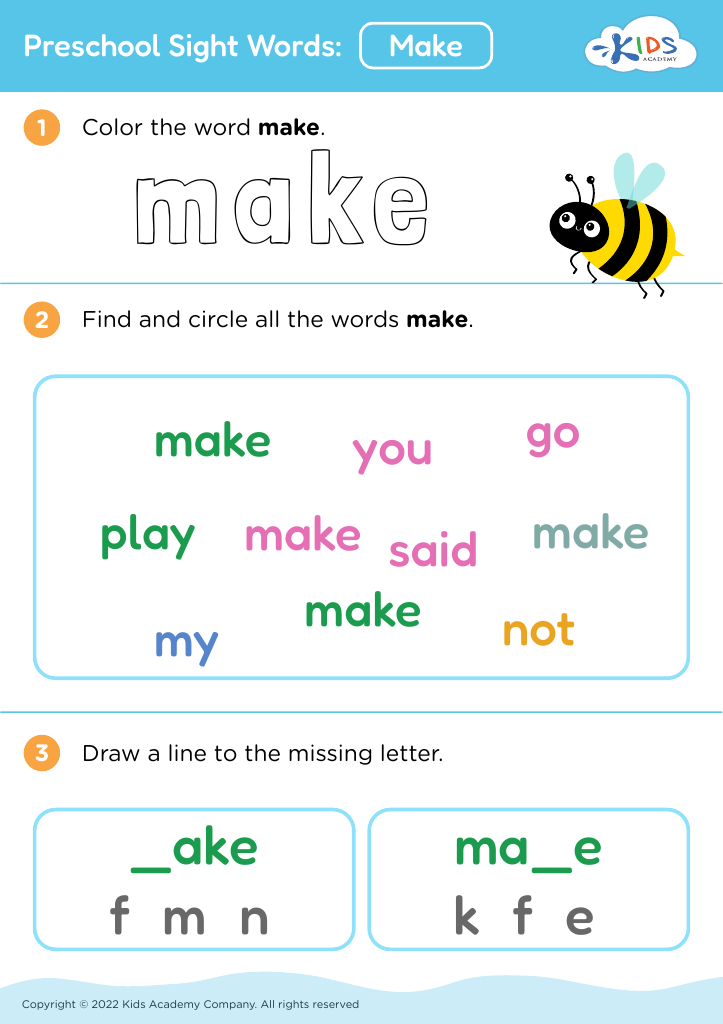Simplifying Fractions Worksheets for Ages 5-8
29 filtered results
-
From - To
Boost your child's math skills with our "Simplifying Fractions Worksheets for Ages 5-8"! Designed to make learning fractions fun and engaging, these worksheets guide young learners through the basics of simplifying fractions. Each activity is crafted to be age-appropriate, ensuring that children between 5 and 8 find the exercises both challenging and attainable. With colorful illustrations and straightforward instructions, kids will effortlessly grasp how to simplify fractions. Perfect for both classroom use and at-home practice, our worksheets are a valuable resource for parents and teachers aiming to strengthen foundational math skills in early learners. Download now for simplified learning!
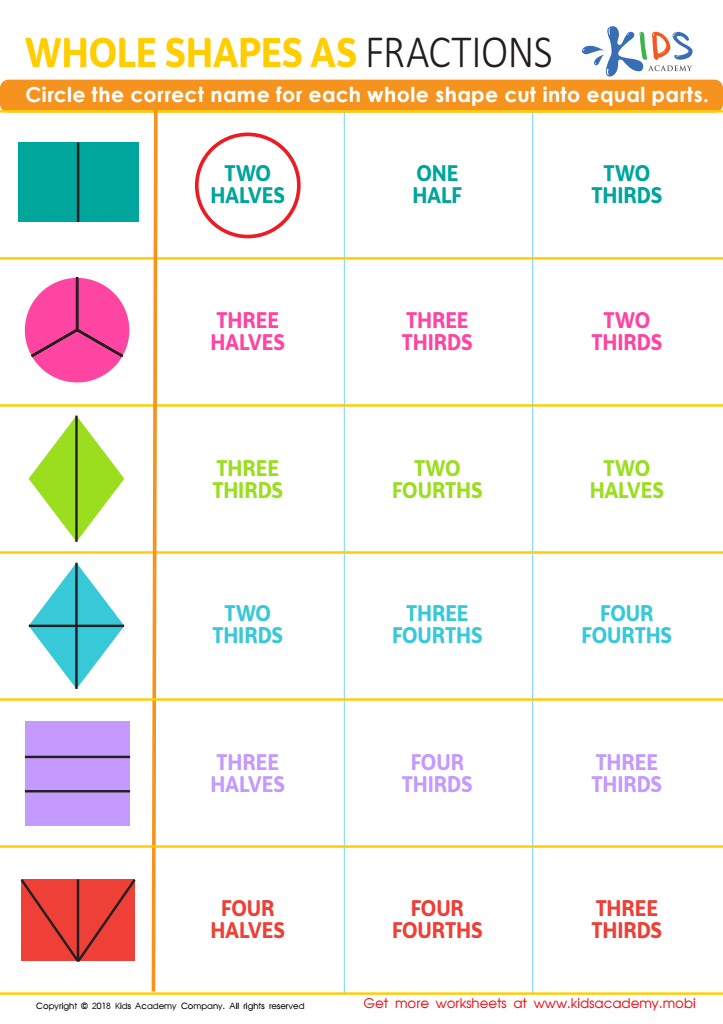

Whole Shapes as Fractions Worksheet
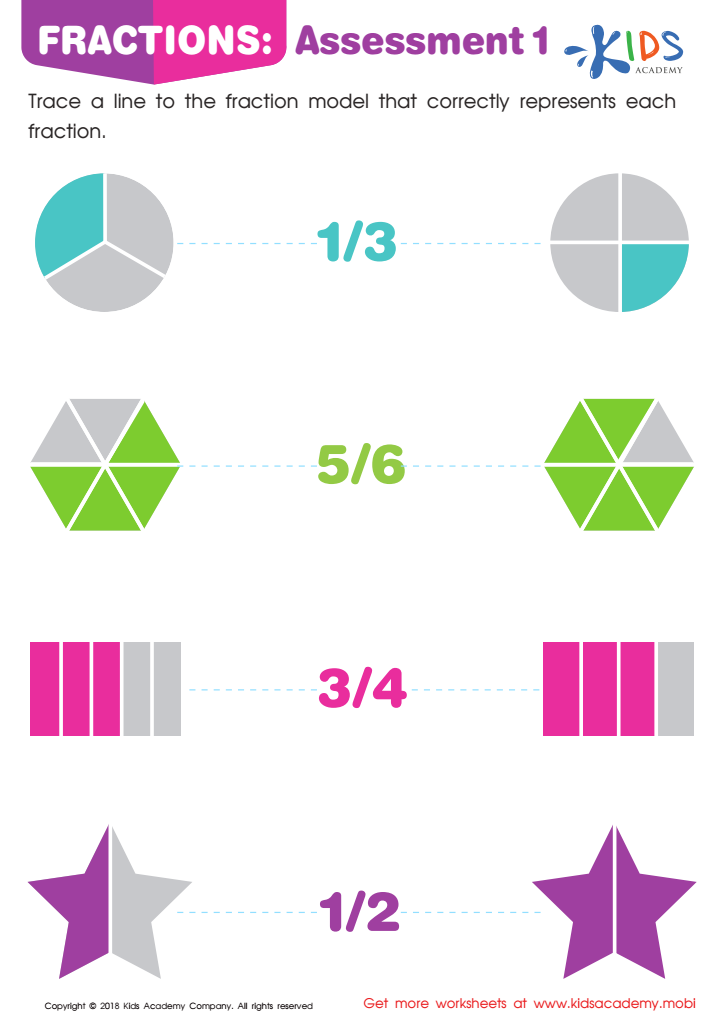

Fractions: Assessment 1 Worksheet
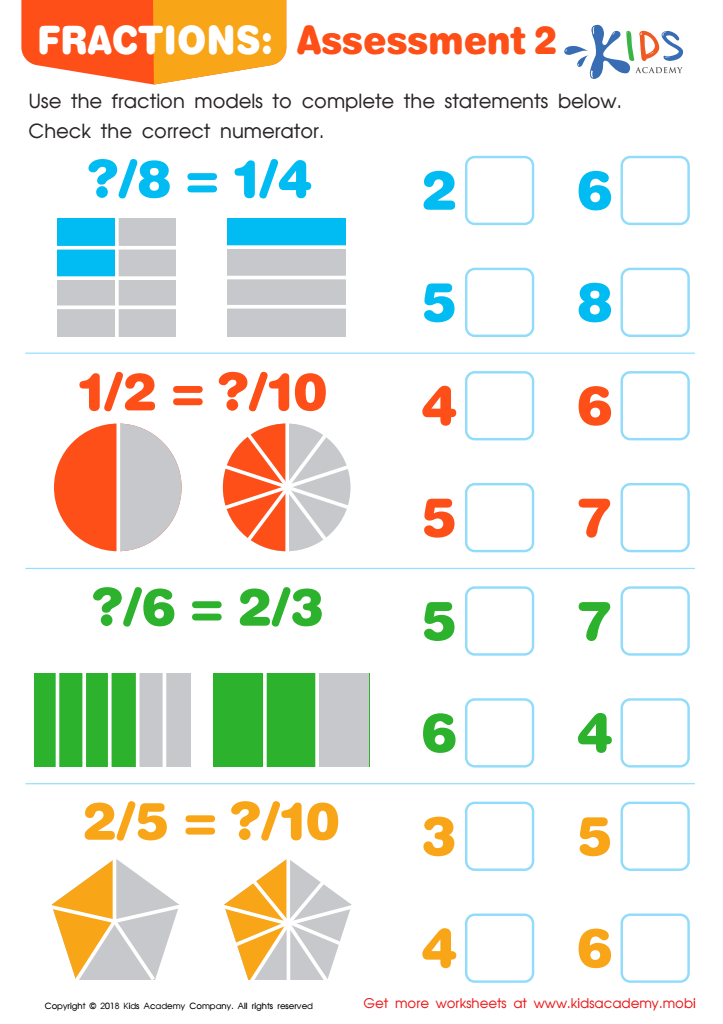

Fractions: Assessment 2 Worksheet
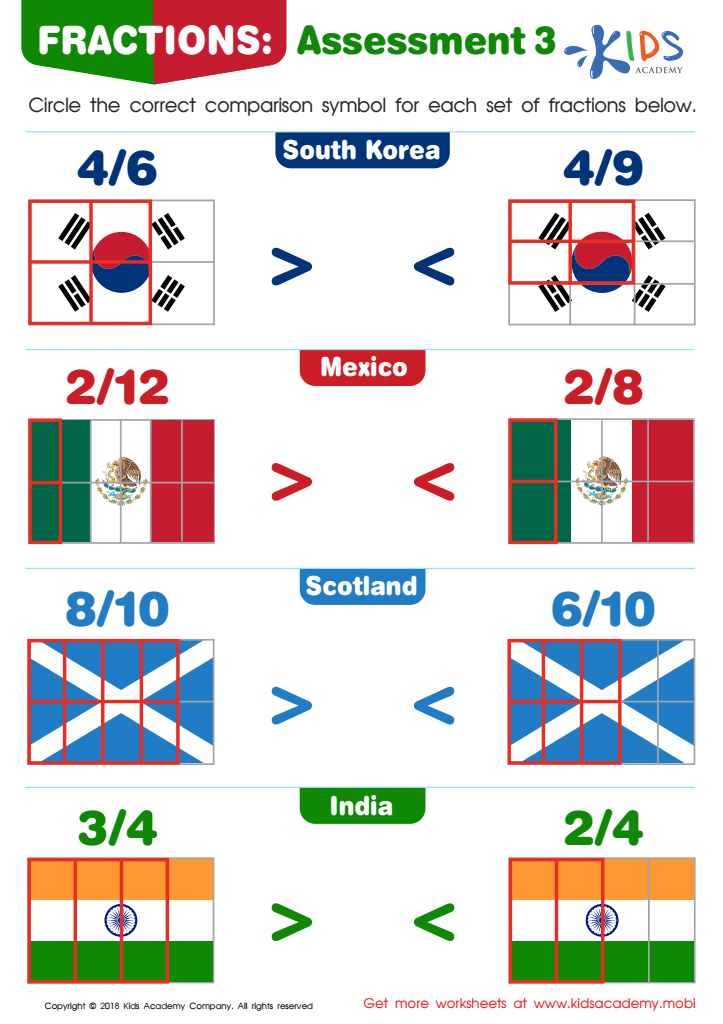

Fractions: Assessment 3 Worksheet
Simplifying fractions might seem like a complex math skill for young learners, but it’s foundational for their number sense and future math success. For children aged 5-8, understanding how to simplify fractions helps build critical thinking and problem-solving skills early on. Mastering this concept strengthens their grasp of equivalence and the relationships between numbers, essential for arithmetic operations and advanced math concepts later.
When teachers and parents focus on simplifying fractions, they provide kids with a practical tool for making sense of proportions, measurement, and real-life problems like dividing a pizza or splitting a group of objects. This early exposure demystifies fractions and lays a strong mathematical foundation, reducing math anxiety as they advance in their education.
Moreover, guiding kids through simplifying fractions enhances their ability to compare and order fractions, deepening their number literacy. Children who feel confident in working with fractions are more likely to excel in other math areas and standardized tests. Engaging young learners with relatable, hands-on activities in simplifying fractions fundamentally shapes their academic journey, instilling a positive outlook and robust proficiency in math from the beginning. This investment yields enriched learning experiences and long-term educational benefits.
 Assign to My Students
Assign to My Students
